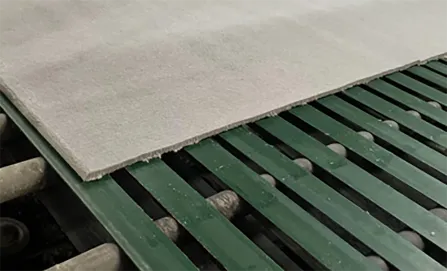Dec . 16, 2024 07:50 Back to list
ceiling grid tie wire
Understanding Ceiling Grid Tie Wire Essential for Construction and Design
In the world of construction and interior design, the importance of proper support systems cannot be overstated. One such critical component is the ceiling grid tie wire, a simple yet essential element used to ensure the stability and safety of suspended ceilings. This article explores the purpose, types, installation, and benefits of ceiling grid tie wire, shedding light on its vital role in the construction process.
What is Ceiling Grid Tie Wire?
Ceiling grid tie wire is a type of metal wire used to secure and stabilize the framework of a suspended ceiling. The suspended ceiling, often composed of lightweight tiles or panels, is hung from the structural ceiling above. The grid system allows for easier access to electrical wiring, plumbing, and HVAC systems while providing an aesthetically pleasing finish. The tie wire connects the ceiling grid to the overhead structure, preventing any movement or sagging over time.
Purpose and Importance
The primary purpose of tie wire is to provide additional support to the ceiling grid, ensuring that it remains level and securely attached to the structural beams. This is crucial in maintaining a uniform ceiling height and preventing the grid system from shifting, which could lead to misalignment or damage to the ceiling tiles. Additionally, tie wire helps in distributing the weight of the ceiling materials evenly across the framework, minimizing the risk of collapse.
In commercial buildings, where larger spaces are common, the need for robust support systems is even more pronounced. Areas such as offices, retail shops, and warehouses can face heavy loads from lighting fixtures, air conditioning units, or decorative elements. Employing tie wire as part of the ceiling grid system is a proactive approach to ensure safety and durability.
Types of Ceiling Grid Tie Wire
Ceiling grid tie wire comes in various gauges and materials, typically made from steel or another durable metal. The choice of wire depends on several factors, including the weight of the ceiling tiles, the distance between support beams, and specific local building codes.
1. Light Gauge Wire Generally used for standard ceiling grids, this type provides sufficient support while being easy to install.
2. Heavy Gauge Wire Designed for more demanding applications, heavy gauge wire is necessary for larger ceiling tiles or when additional support is needed due to environmental factors.
3. Galvanized Wire Commonly used in both commercial and residential applications, galvanized wire is resistant to corrosion, making it suitable for environments exposed to moisture.
ceiling grid tie wire

Installation Process
The installation of ceiling grid tie wire is a straightforward process but requires proper planning and execution
. Here are the general steps involved1. Planning the Layout Before installation, a detailed plan for the grid layout must be created, taking into account the location of lights, heating vents, and any other fixtures.
2. Installing the Grid Framework The main runners and cross tees of the grid system are installed first, which will serve as the foundation for the ceiling tiles.
3. Attaching Tie Wire Tie wire is then cut to appropriate lengths and used to connect the grid to the overhead structure. The wires should be spaced evenly along the length of the grid, ensuring adequate support.
4. Tightening and Securing Once tied in place, the wire must be tightened to eliminate any slack and ensure a stable connection.
5. Final Adjustments After installation, final adjustments can be made to ensure the ceiling is perfectly level.
Benefits of Using Ceiling Grid Tie Wire
Using ceiling grid tie wire offers numerous benefits, including
- Increased Stability Provides additional stability and support for the suspended ceiling. - Flexibility Allows for the easy adjustment and installation of ceiling tiles. - Cost-Effectiveness An affordable solution for securing ceiling grids without compromising safety. - Durability High-quality wire ensures long-lasting performance, reducing the need for future repairs.
Conclusion
In conclusion, ceiling grid tie wire is an indispensable component for any suspended ceiling system. Its role in providing structural integrity, safety, and aesthetic form makes it a critical consideration for architects, builders, and interior designers alike. Whether in commercial or residential settings, proper installation and use of tie wire ensure that ceilings remain safe, functional, and visually appealing for years to come.
-
Quality Ceiling Trap Doors & Access Panels | Easy & Secure AccessNewsAug.30,2025
-
Durable Ceiling T Grid Systems | Easy InstallationNewsAug.29,2025
-
PVC Gypsum Ceiling: Durable, Laminated Tiles for Modern SpacesNewsAug.28,2025
-
Pvc Gypsum Ceiling Is DurableNewsAug.21,2025
-
Mineral Fiber Board Is DurableNewsAug.21,2025
-
Ceiling Tile Clip Reusable DesignNewsAug.21,2025







